Category: Recommended Reading
Yes, Tax the Rich—and Also the Merely Affluent
Alex Raskolnikov in the Boston Review:
 “Those in the 1 percent are walking off with the riches, but in doing so they have provided nothing but anxiety and insecurity to the 99 percent,” explained Nobel laureate Joseph Stiglitz in his 2012 book The Price of Inequality. The “main fault line in the American society is . . . between the 1 percent and everybody else,” insisted celebrated economists Emanuel Saez and Gabriel Zucman in their book The Triumph of Injustice, published amid the 2020 presidential campaign. Dramatic wealth tax proposals by Democratic presidential candidates Senators Bernie Sanders and Elizabeth Warren, chair of the tax-writing committee Senator Ron Wyden, and even an income taxation plan by Representative Alexandria Ocasio-Cortez do not come close to hiking taxes on anyone below the 1 percent threshold. The same is true of the suggestions by numerous tax academics considering how to tax the rich.
“Those in the 1 percent are walking off with the riches, but in doing so they have provided nothing but anxiety and insecurity to the 99 percent,” explained Nobel laureate Joseph Stiglitz in his 2012 book The Price of Inequality. The “main fault line in the American society is . . . between the 1 percent and everybody else,” insisted celebrated economists Emanuel Saez and Gabriel Zucman in their book The Triumph of Injustice, published amid the 2020 presidential campaign. Dramatic wealth tax proposals by Democratic presidential candidates Senators Bernie Sanders and Elizabeth Warren, chair of the tax-writing committee Senator Ron Wyden, and even an income taxation plan by Representative Alexandria Ocasio-Cortez do not come close to hiking taxes on anyone below the 1 percent threshold. The same is true of the suggestions by numerous tax academics considering how to tax the rich.
But there are plenty of reasons to expand the conversation about higher taxes to some of those in the 99 percent—specifically those with incomes in the 90th to 99th percentile. Let us call them the affluent.
More here.
Edward Witten – Why the ‘Unreasonable Effectiveness’ of Mathematics
Frog
Anne Fadiman at Harper’s Magazine:
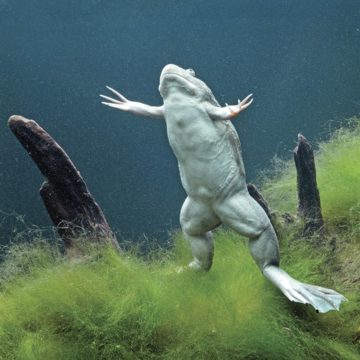 Until last summer, we had a dead frog in our freezer. When Bunky died, George and I thought we should wait to bury him till both our grown children were home, so we put him in a Ziploc bag and propped him on his side on a shallow shelf in the freezer door, just above the icemaker. Bunky was flat and compact and, very soon, as rigid as a cell phone. He fit perfectly. I’d always wondered what KitchenAid intended that shelf for—it was too narrow for any food I could think of—but now we knew. It was intended to hold a frog.
Until last summer, we had a dead frog in our freezer. When Bunky died, George and I thought we should wait to bury him till both our grown children were home, so we put him in a Ziploc bag and propped him on his side on a shallow shelf in the freezer door, just above the icemaker. Bunky was flat and compact and, very soon, as rigid as a cell phone. He fit perfectly. I’d always wondered what KitchenAid intended that shelf for—it was too narrow for any food I could think of—but now we knew. It was intended to hold a frog.
There are two kinds of pets—the ones you choose and the ones that happen to you. Bunky belonged to the second category. He entered our family in the haphazard fashion of pets of that ilk: tadpole kit (cubical plastic “habitat” with domed top, like nave of Hagia Sophia, sans tadpole but accompanied by redeemable coupon), left by educational-toy-oriented grandmother for granddaughter under Christmas tree; kit sidelined for years on toy shelf; kit discovered by granddaughter’s preschool-age little brother; tadpole coveted; tadpole coupon redeemed by parents; tadpole shipped to New York City from Florida in Styrofoam container; tadpole universally admired for transparent skin (visibly beating heart!) and awesome metamorphosis (weird whiskers! hind legs! front legs! no more tail!); froglet admired somewhat less; adult frog mostly ignored, except by visiting small boys, who, if they didn’t have frogs themselves, paused to pay brief homage before moving on to Legos, and by owner’s father, who, despite initial intentions to teach son responsibility through pet care, ended up feeding frog (Stage Two Food Nuggets, meted out with tiny yellow Stage Two Food Serving Spoon dainty enough for fairy) and, once frog graduated from Hagia Sophia, cleaning aquarium, first two-gallon plastic, then four-gallon glass (challenging, because frog, coated with gelatinous goo, required apprehension and temporary relocation while aquarium was emptied, refilled, and doctored with dechlorinating crystals, and damn, was he slippery).
more here.
Camus’s New York Diary, 1946
Albert Camus at the Paris Review:
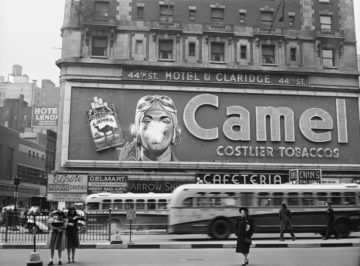 Their fondness for animals. A multistory pet shop: canaries on the second floor, great apes at the top. A couple of years ago, a man was arrested on Fifth Avenue for driving a giraffe around in his truck. He explained that his giraffe didn’t get enough air out in the suburbs where he kept it and that he’d found this to be a good way to get it some air. In Central Park, a lady brought a gazelle to graze. To the court, she explained that the gazelle was a person. “Yet it doesn’t speak,” the judge said. “Oh, yes, it speaks the language of lovingkindness.” Five-dollar fine. There’s also the three-kilometer tunnel under the Hudson and the impressive bridge to New Jersey.
Their fondness for animals. A multistory pet shop: canaries on the second floor, great apes at the top. A couple of years ago, a man was arrested on Fifth Avenue for driving a giraffe around in his truck. He explained that his giraffe didn’t get enough air out in the suburbs where he kept it and that he’d found this to be a good way to get it some air. In Central Park, a lady brought a gazelle to graze. To the court, she explained that the gazelle was a person. “Yet it doesn’t speak,” the judge said. “Oh, yes, it speaks the language of lovingkindness.” Five-dollar fine. There’s also the three-kilometer tunnel under the Hudson and the impressive bridge to New Jersey.
After the talk, a drink with Schiffrin and Dolorès Vanetti— who speaks the purest slang I’ve ever heard—and with others, too. Madame Schiffrin asks if I was ever an actor.
more here.
Straight from the heart
Mitch Leslie in Science:
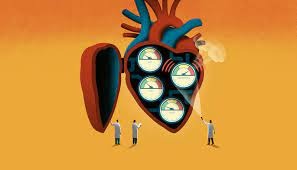 Stephanie Blendermann, 65, had good reason to worry about heart disease. Three of her sisters died in their 40s or early 50s from heart attacks, and her father needed surgery to bypass clogged arteries. She also suffered from an autoimmune disorder that results in chronic inflammation and boosts the odds of developing cardiovascular illnesses. “I have an interesting medical chart,” says Blendermann, a real estate agent in Prior Lake, Minnesota.
Stephanie Blendermann, 65, had good reason to worry about heart disease. Three of her sisters died in their 40s or early 50s from heart attacks, and her father needed surgery to bypass clogged arteries. She also suffered from an autoimmune disorder that results in chronic inflammation and boosts the odds of developing cardiovascular illnesses. “I have an interesting medical chart,” says Blendermann, a real estate agent in Prior Lake, Minnesota.
Yet Blendermann’s routine lab results weren’t alarming. At checkups, her low-density lipoprotein (LDL), or “bad,” cholesterol hovered around the 100 milligrams-per-deciliter cutoff for normal values, and her total cholesterol—the good and bad versions combined—remained in the recommended range. “I thought I was cruising along just fine,” she says.
But because Blendermann’s risk was unclear, in late 2021 her doctor decided to refer her to cardiologist Vlad Vasile at the Mayo Clinic. To pin down her susceptibility to atherosclerosis, Vasile prescribed a test for substances Blendermann had never heard of: lipids called ceramides. Long overlooked, they are emerging as powerful alternatives to standard markers of heart disease risk such as LDL cholesterol. Blendermann’s score was moderately high, suggesting that compared with a person with a low score, she was more than twice as likely to suffer a cardiovascular event such as a heart attack. “It woke us up big time,” she says. “The ceramides told me the bigger story.” She began to take cholesterol-lowering drugs and overhauled her diet and exercise regime.
More here.
Friday Poem
Griffy the Cooper
The cooper should know about tubs.
But I learned about life as well,
And you who loiter around these graves
Think you know life.
You think your eye sweeps about a wide horizon
,…… perhaps,
In truth you are only looking around the interior
……. of your tub.
You cannot lift yourself to its rim
And see the outer world of things,
And at the same time see yourself.
You are submerged in the tub of yourself —
Taboos and rules and appearances,
And the staves of your tub.
Break them and dispel the witchcraft
Of thinking your tub is life!
And that you know life!
by Edgar Lee Masters
from Spoon River Anthology
Collier Books, 1962
Can We Program Our Cells?
From Quanta Magazine:
By genetically instructing cells to perform tasks that they wouldn’t in nature, synthetic biologists can learn deep secrets about how life works. Steven Strogatz discusses the potential of this young field with researcher Michael Elowitz.
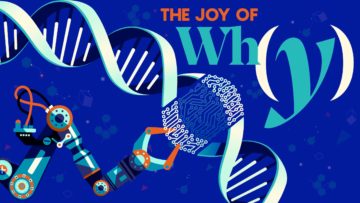 What is synthetic biology and what are scientists trying to do with it? Simply put, we could say that synthetic biology is a fusion of biology, especially molecular biology, and engineering. The distinctive thing about it is that it treats cells as programmable devices. It’s a kind of tinker toy approach that builds circuits, but not out of wires and switches like we’re used to, but rather out of biological components, like proteins and genes. Programming cells in this way isn’t really all that different from programming computers, except that the programming language isn’t Python, or C++. It’s the language of biology, the language of DNA, with the goal of making proteins that will interact with each other in some clever ways.
What is synthetic biology and what are scientists trying to do with it? Simply put, we could say that synthetic biology is a fusion of biology, especially molecular biology, and engineering. The distinctive thing about it is that it treats cells as programmable devices. It’s a kind of tinker toy approach that builds circuits, but not out of wires and switches like we’re used to, but rather out of biological components, like proteins and genes. Programming cells in this way isn’t really all that different from programming computers, except that the programming language isn’t Python, or C++. It’s the language of biology, the language of DNA, with the goal of making proteins that will interact with each other in some clever ways.
The potential medical applications of synthetic biology are huge. But also, the approach holds promise for illuminating how life works at the deepest level. It’s one thing to strip cells apart to see how they work. That’s the classic approach to molecular biology. But it’s another thing to tinker with cells to try to get them to perform new tricks, which is something that my guest, Michael Elowitz, does. For example, a while back, he engineered cells to blink on and off like Christmas lights.
More here.
Thursday, March 16, 2023
BFI at Home I Filmmakers in Focus: Věra Chytilová
Ester Krumbachová’s Unsung Legacy
Jonathan Owen at The Current:
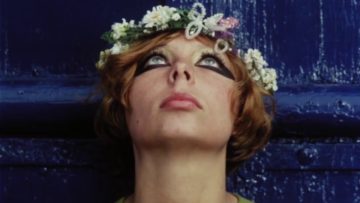 The 1960s saw a remarkable cinematic renaissance in what was then called Czechoslovakia, and Ester Krumbachová was its renaissance woman. Combining the talents of costume, set, and prop designer, screenwriter, and director, Krumbachová contributed to many of the greatest films of the Czechoslovak New Wave, including Daisies (1966), A Report on the Party and Guests (1966), Witchhammer (1970), and Valerie and Her Week of Wonders (1970). Though these films have long been celebrated for their anarchic imagination and bold political critiques, the woman who perhaps most fully embodied their inventive spirit and sharp moral viewpoint remains all too little appreciated.
The 1960s saw a remarkable cinematic renaissance in what was then called Czechoslovakia, and Ester Krumbachová was its renaissance woman. Combining the talents of costume, set, and prop designer, screenwriter, and director, Krumbachová contributed to many of the greatest films of the Czechoslovak New Wave, including Daisies (1966), A Report on the Party and Guests (1966), Witchhammer (1970), and Valerie and Her Week of Wonders (1970). Though these films have long been celebrated for their anarchic imagination and bold political critiques, the woman who perhaps most fully embodied their inventive spirit and sharp moral viewpoint remains all too little appreciated.
Krumbachová has been feted as the “queen of Czech film design” and “the muse of the Czechoslovak New Wave.”
more here.
Sarah Lucas: The Young British Artist At 60
Kate Mossman at The New Statesman:
 Twenty-five years on from the YBA movement, Lucas is still admired for her lightness of touch. She used sex to draw people in to her work, she recently said – to keep art open to “plebs like myself”. She was funny, but she was funny because she was clever: much of her work was barely “made”, just a couple of objects, perfectly arranged. Has she never wanted assistants, like Hirst, to help her churn out more bunnies? “If I can’t be bothered to make ’em, I wouldn’t want someone else to make ’em,” she says. “And I don’t know where I’m going with it until I’ve done it, so it’s not like I can tell someone else how to do it.” Unlike her former friend Tracey Emin, she does not try to draw.
Twenty-five years on from the YBA movement, Lucas is still admired for her lightness of touch. She used sex to draw people in to her work, she recently said – to keep art open to “plebs like myself”. She was funny, but she was funny because she was clever: much of her work was barely “made”, just a couple of objects, perfectly arranged. Has she never wanted assistants, like Hirst, to help her churn out more bunnies? “If I can’t be bothered to make ’em, I wouldn’t want someone else to make ’em,” she says. “And I don’t know where I’m going with it until I’ve done it, so it’s not like I can tell someone else how to do it.” Unlike her former friend Tracey Emin, she does not try to draw.
Lucas, now 60, talks soft and fast in a velveteen smokers’ tone that, in ten years, will be as deep as Dot Cotton’s. She refers to herself as more or less an alcoholic.
more here.
Kazuo Ishiguro on Life, Death, and the Movies
Elaine Szewczyk at The Millions:
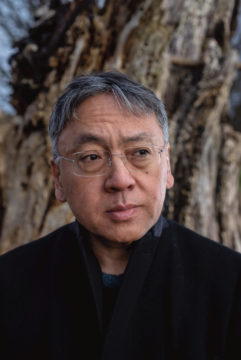 Kazuo Ishiguro has had a busy few months. The acclaimed novelist has been attending film festivals and walking red carpets to promote the film Living, for which he wrote the screenplay. Living—a remake of the 1952 Japanese film Ikiru, directed by Akira Kurosawa, which was inspired by Leo Tolstoy’s 1886 novella The Death of Ivan IIyich—is set in 1950s London and stars Bill Nighy as Rodney Williams, a senior bureaucrat in the Public Works department who is dying of cancer. The film has been an awards season darling, and this January Ishiguro was nominated for an Academy Award, his first, for best adapted screenplay.
Kazuo Ishiguro has had a busy few months. The acclaimed novelist has been attending film festivals and walking red carpets to promote the film Living, for which he wrote the screenplay. Living—a remake of the 1952 Japanese film Ikiru, directed by Akira Kurosawa, which was inspired by Leo Tolstoy’s 1886 novella The Death of Ivan IIyich—is set in 1950s London and stars Bill Nighy as Rodney Williams, a senior bureaucrat in the Public Works department who is dying of cancer. The film has been an awards season darling, and this January Ishiguro was nominated for an Academy Award, his first, for best adapted screenplay.
No stranger to big awards, Ishiguro has won the Booker Prize, the Nobel Prize for Literature, and in 2019 received a knighthood for his contribution to literature.
More here.
Quantum mechanics: how the future might influence the past
Huw Price and Ken Wharton in The Conversation:
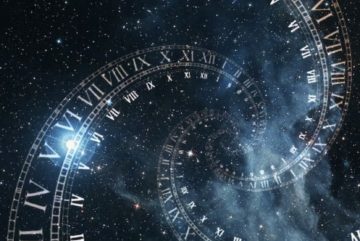 In 2022, the physics Nobel prize was awarded for experimental work showing that the quantum world must break some of our fundamental intuitions about how the universe works.
In 2022, the physics Nobel prize was awarded for experimental work showing that the quantum world must break some of our fundamental intuitions about how the universe works.
Many look at those experiments and conclude that they challenge “locality” — the intuition that distant objects need a physical mediator to interact. And indeed, a mysterious connection between distant particles would be one way to explain these experimental results.
Others instead think the experiments challenge “realism” — the intuition that there’s an objective state of affairs underlying our experience. After all, the experiments are only difficult to explain if our measurements are thought to correspond to something real. Either way, many physicists agree about what’s been called “the death by experiment” of local realism.
But what if both of these intuitions can be saved, at the expense of a third? A growing group of experts think that we should abandon instead the assumption that present actions can’t affect past events. Called “retrocausality”, this option claims to rescue both locality and realism.
More here.
Interview with GPT-4 Creator Ilya Sutskever
Propaganda (Almost) Never Works: Notes on Russian interference attempts
Hugo Mercier in Persuasion:
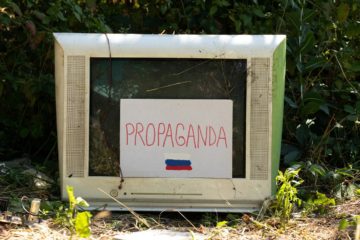 After Donald Trump won the 2016 presidential election there was widespread suspicion that the results had been influenced by a Russian operation. The Internet Research Agency, a “troll factory” operating out of St Petersburg, was creating accounts posing as U.S. citizens or news agencies, posting thousands upon thousands of messages, the majority in support of Trump, and many fake. Could the Russians have pulled off something as big as swaying a U.S. election?
After Donald Trump won the 2016 presidential election there was widespread suspicion that the results had been influenced by a Russian operation. The Internet Research Agency, a “troll factory” operating out of St Petersburg, was creating accounts posing as U.S. citizens or news agencies, posting thousands upon thousands of messages, the majority in support of Trump, and many fake. Could the Russians have pulled off something as big as swaying a U.S. election?
The answer has recently been confirmed: No. In January this year, a study by Gregory Eady, Tom Paskhalis, and their colleagues found that the majority (70%) of this Russian propaganda was consumed by only 1% of Twitter users, people who were already staunch Republicans and thus already overwhelmingly likely to vote for Trump. As a result, the fake news shared by the trolls merely preached to the choir. It doesn’t seem to have changed anyone’s mind.
More here.
Within you without you
More here.
Why AlphaFold won’t revolutionise drug discovery
Derek Lowe in Chemistry World:
 DeepMind’s AlphaFold team has been having quite a run of success in predicting protein structures. This has long been considered one of the truly difficult problems in computational biology, and AlphaFold has made extraordinary progress over the last year or two. This has culminated in the recent release of predicted structures for the great majority of the human proteome, which is the sort of thing that, ten years ago, would have sounded like the opening of a science fiction story.
DeepMind’s AlphaFold team has been having quite a run of success in predicting protein structures. This has long been considered one of the truly difficult problems in computational biology, and AlphaFold has made extraordinary progress over the last year or two. This has culminated in the recent release of predicted structures for the great majority of the human proteome, which is the sort of thing that, ten years ago, would have sounded like the opening of a science fiction story.
I have no desire to take anything away from this success. It really is impressive. But some of the headlines have betrayed real misunderstandings about what’s been accomplished. First off, as I wrote here earlier this year, we have not made sudden huge leaps in understanding why proteins fold like they do. The AlphaFold people have made great progress in recognising different known protein folding motifs and assembling them into structures that are very often correct. Forming these coils, loops, and sheets is what proteins generally do, but ‘why?’ doesn’t enter into it. If we’d waited for an answer at that level, we’d be waiting for many more years.
More here.
Thursday Poem
Bird Psalm
The Swallow said,
He comes like me,
Longed for; unexpectedly.
The superficial eye
Will pass him by,
Said the Wren.
The best singer ever heard.
No one will take much notice,
Said the Blackbird.
The Owl said,
He is who, who is he
Who enters the heart as soft
As my soundless wings, as me.
by U.A. Fanthorp
from The National Poetry Library
Wednesday, March 15, 2023
Honoring Felix Hernandez—The Maestro Of The Groove
Dominic Preziosi at Commonweal:
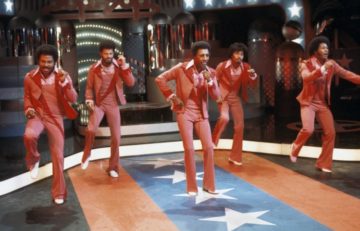 “Good morning, my soul-licious listeners” is how Felix Hernandez recently greeted his Saturday-morning audience, the many thousands who tune in for his long-running Rhythm Revue show, which airs and streams on WBGO, Newark’s public-radio outlet. I’ve counted myself among them since early 1995, when my boss on the copy desk of the magazine I worked at informed me of the show’s existence. Nearing what then seemed to me the wise old age of forty, he possessed an edgy wit and encyclopedic knowledge of mid-century American jazz and soul, his headlines sometimes containing sly references to Charlie Parker or Wilson Pickett. On Mondays he would grill me about what I’d heard on Rhythm Revue that weekend, and, clearly more important, what I’d liked. Bill Withers’s “Lovely Day” or Al Green’s “I Can’t Get Next to You”? Aretha Franklin’s “Think” or Little Sister’s “You’re the One”? Pickett’s version of “You Keep Me Hangin’ On,” or The Supremes’—and why? It was like a test I had to pass to gain his trust, which I think I did, eventually. When I told him a few months later that I’d received the special three-CD Rhythm Revue compilation for giving money during WBGO’s spring pledge drive, he reacted as if I’d been saved from perdition.
“Good morning, my soul-licious listeners” is how Felix Hernandez recently greeted his Saturday-morning audience, the many thousands who tune in for his long-running Rhythm Revue show, which airs and streams on WBGO, Newark’s public-radio outlet. I’ve counted myself among them since early 1995, when my boss on the copy desk of the magazine I worked at informed me of the show’s existence. Nearing what then seemed to me the wise old age of forty, he possessed an edgy wit and encyclopedic knowledge of mid-century American jazz and soul, his headlines sometimes containing sly references to Charlie Parker or Wilson Pickett. On Mondays he would grill me about what I’d heard on Rhythm Revue that weekend, and, clearly more important, what I’d liked. Bill Withers’s “Lovely Day” or Al Green’s “I Can’t Get Next to You”? Aretha Franklin’s “Think” or Little Sister’s “You’re the One”? Pickett’s version of “You Keep Me Hangin’ On,” or The Supremes’—and why? It was like a test I had to pass to gain his trust, which I think I did, eventually. When I told him a few months later that I’d received the special three-CD Rhythm Revue compilation for giving money during WBGO’s spring pledge drive, he reacted as if I’d been saved from perdition.
more here.
Atelier 17 and the Birth of Abstract Expressionism
Dominic Green at Literary Review:
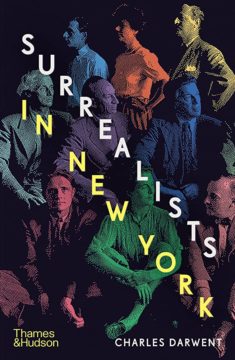 The accelerated uptake of Surrealism in America followed the accelerated intake of Surrealist artists. By 1941, the arrival in New York City of émigrés like André Masson, Salvador Dalí, Max Ernst and the ‘Pope of Surrealism’ himself, André Breton, was precipitating what Darwent calls ‘one of the greatest cultural exchanges in modern history’. The full story is in Martica Sawin’s Surrealism in Exile and the Beginning of the New York School. Darwent’s book examines an often-overlooked channel of transmission, Atelier 17, and its founder, the English printer, painter and teacher Stanley William Hayter.
The accelerated uptake of Surrealism in America followed the accelerated intake of Surrealist artists. By 1941, the arrival in New York City of émigrés like André Masson, Salvador Dalí, Max Ernst and the ‘Pope of Surrealism’ himself, André Breton, was precipitating what Darwent calls ‘one of the greatest cultural exchanges in modern history’. The full story is in Martica Sawin’s Surrealism in Exile and the Beginning of the New York School. Darwent’s book examines an often-overlooked channel of transmission, Atelier 17, and its founder, the English printer, painter and teacher Stanley William Hayter.
Born in 1901, Hayter went to Paris in 1926 and set up the first Atelier 17 there the following year. He worked with Picasso, Miró and Kandinsky on their printmaking. He also developed, Darwent writes, ‘the quixotic idea’ of reviving the burin, an ‘engraving tool with a mushroom-like handle at one end and a sword-sharp edge at the other’ once used by Dürer and Doré.
more here.
